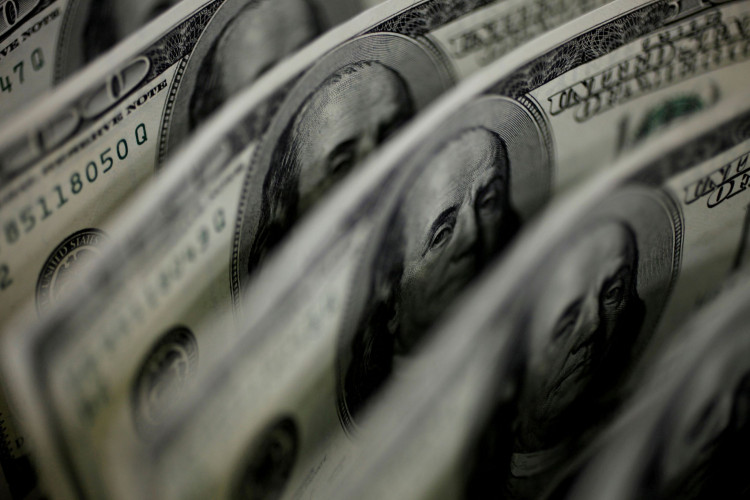The U.S. dollar has recently rebounded swiftly, but analysts believe this uptrend might be short-lived.
Since plunging below 100 on July 13th, marking its lowest level in over a year, the dollar index has risen by more than 4%, returning to levels seen around May this year.
In a report released on August 29th, Daragh Maher, HSBC's head of FX strategy and research, and his team suggested that the dollar's resurgence over the past six weeks is primarily based on the notion of "American exceptionalism." U.S. economic data has outperformed expectations, propelling U.S. bond yields and the dollar higher. However, this trend in the dollar index might also signal overheating:
HSBC's stance is that the dollar's current rally might be hard to sustain, given that yields have already moved significantly. A bullish dollar would require hawkish U.S. data and further underperformance in economic data from other countries.
Their advice is that while further gains in the dollar might be challenging, it doesn't necessarily imply an imminent sharp decline.
HSBC believes that the dollar's current price has already factored in most expectations, and further hikes would require more data to back them up.
Bullish Momentum Waning
HSBC noted that over the past month, there has been a significant amount of dollar buying, but the likelihood of this bullish momentum continuing seems slim:
They believe the dollar might struggle to maintain its monthly gains since U.S. yields have seen a substantial rise. The dollar is susceptible to dovish signals, especially those surrounding U.S. CPI.
There has been a significant speculative flow into the dollar in recent weeks.
The challenge now is whether this bullish momentum for the dollar can outweigh valuations and positions, which HSBC is skeptical about.
The dollar's real effective exchange rate remains 10% above its long-term average.
HSBC believes that from these levels, dollar bulls would need some new catalysts to drive further gains. It seems unlikely that there will be sufficient new developments to support a continued rise in the dollar.
One possibility is that the FOMC's potential rate hike on September 20th might become a more active topic in the market. However, Chairman Powell did not set such expectations in his recent Jackson Hole speech.
Alternatively, the market might continue to adjust hawkishly to expectations of where rates will eventually settle post-easing cycle. Yet, Powell did not provide any signs at Jackson Hole that the Federal Reserve's long-term dot plot (or R-star) is about to be significantly raised.
Based on the above, HSBC believes this suggests the Federal Reserve is leaning towards a pause in rate hikes, which would also impact the dollar's momentum:
Historically, the dollar has been volatile after the Federal Reserve paused at policy rate peaks. Although U.S. yields have consistently declined during these periods, the dollar sometimes rose and sometimes fell, typically based on shifts in risk appetite rather than yields.
Risk appetite took a hit in August but has shown some early signs of bottoming out.
To seek more evidence of a slowdown in U.S. inflation, a series of economic data for August, which will be released soon, will be in the spotlight:
Any dovish surprises would pose a significant challenge to the current market, which is propped up by the dollar. The impact of hawkish surprises might not be as pronounced.






